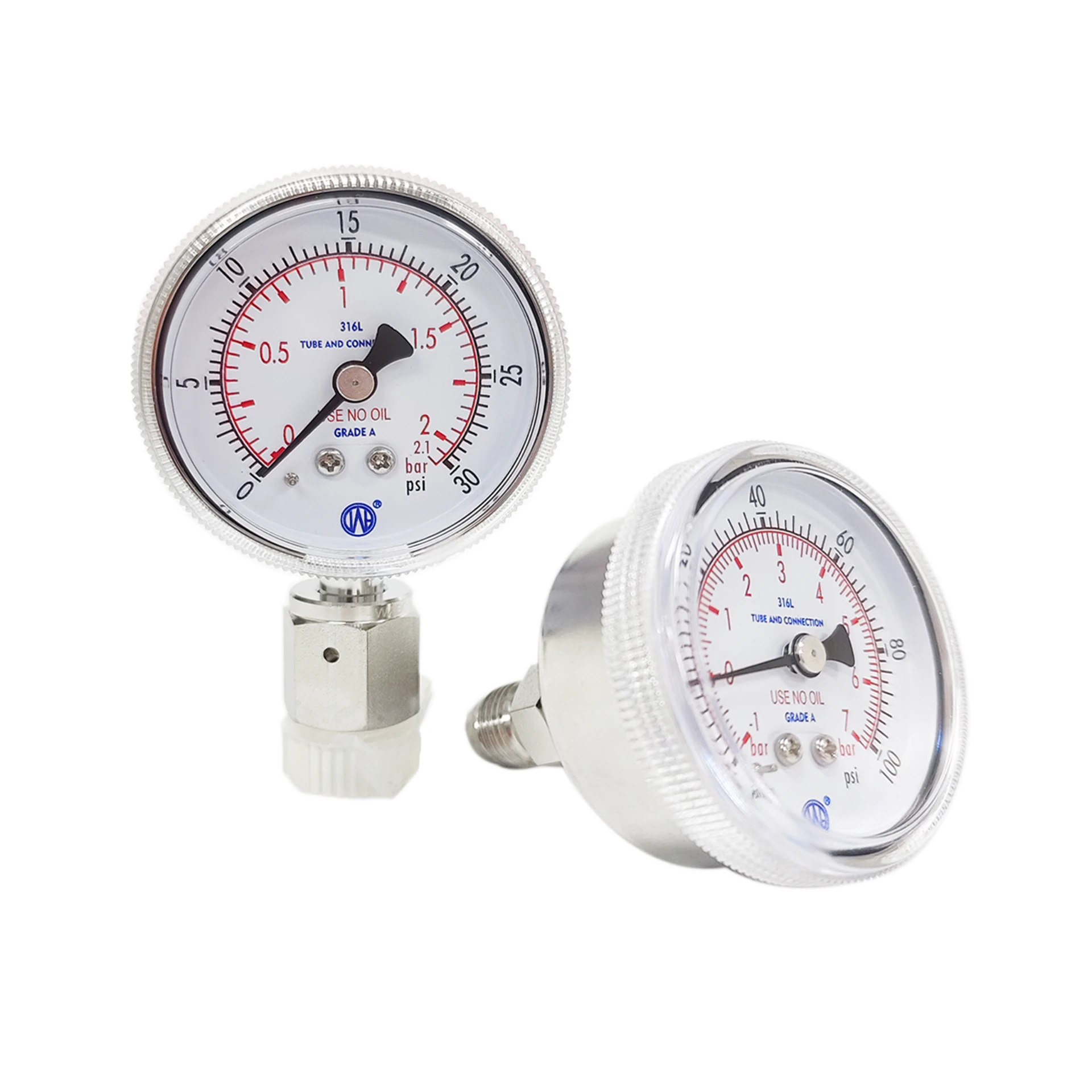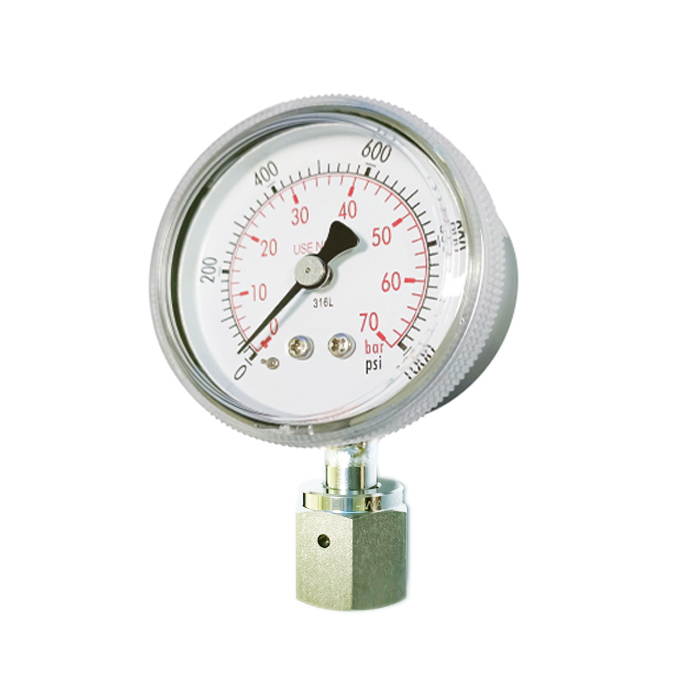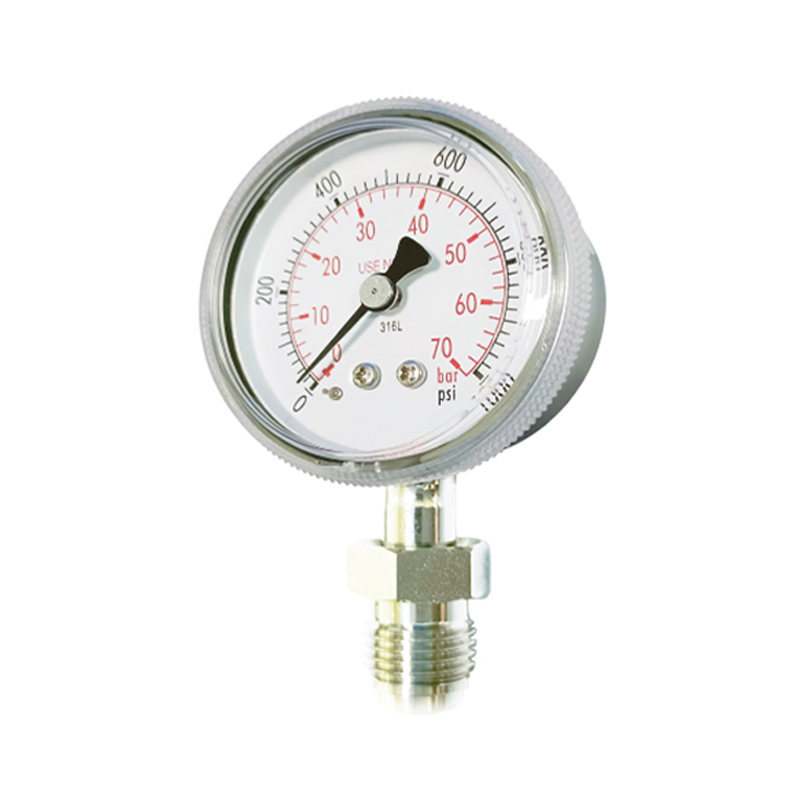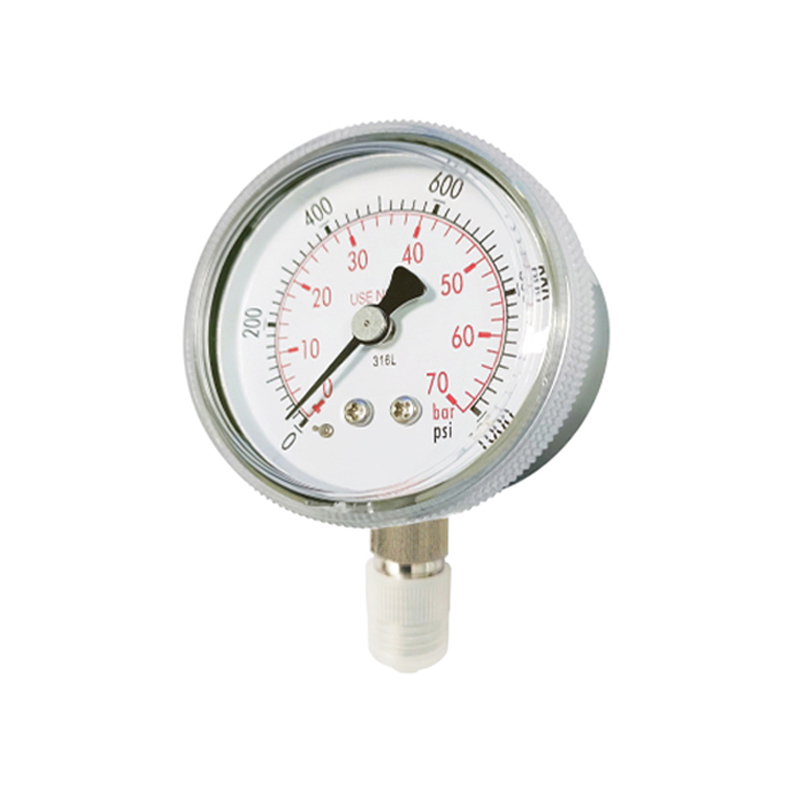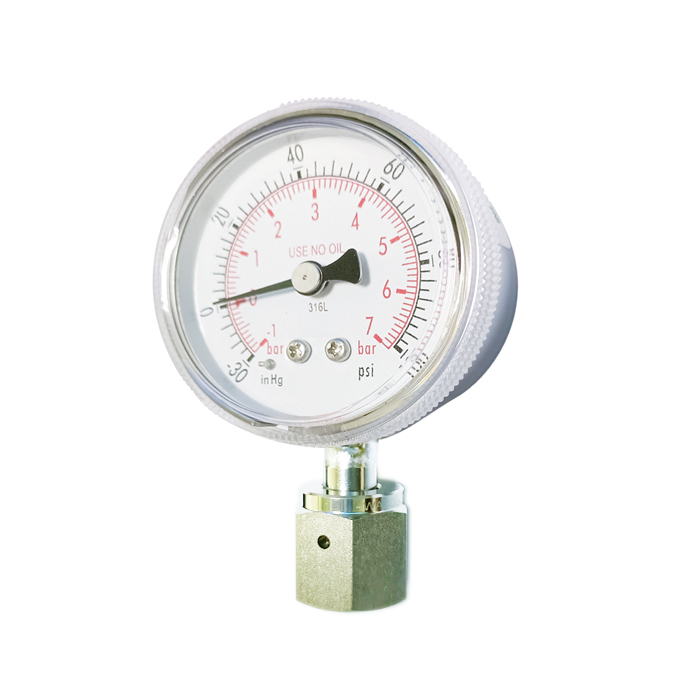Introducing the Next Generation of Pressure Gauges: The Chips and Semiconductors Pressure Gauge
In an era where precision and reliability are paramount, the Chips and Semiconductors Pressure Gauge stands out as a revolutionary tool designed to meet the demands of modern industries. This state-of-the-art pressure gauge combines advanced semiconductor technology with high-quality chip components to deliver unparalleled accuracy and performance in pressure measurement.
Unmatched Precision and Reliability
At the heart of the Chips and Semiconductors Pressure Gauge is its innovative design, which leverages cutting-edge semiconductor technology. This allows for highly sensitive pressure readings, ensuring that even the slightest fluctuations in pressure are detected and reported. Whether you are working in manufacturing, automotive, aerospace, or any other industry that requires precise pressure monitoring, this gauge is engineered to provide you with the reliability you need.
The gauge features a robust construction that can withstand harsh environments, making it ideal for both indoor and outdoor applications. Its durable materials ensure longevity, reducing the need for frequent replacements and maintenance. With the Chips and Semiconductors Pressure Gauge, you can trust that your measurements will remain accurate over time, even in the most challenging conditions.
User-Friendly Interface
Understanding the importance of ease of use, the Chips and Semiconductors Pressure Gauge is designed with a user-friendly interface. The large, easy-to-read display provides clear visibility of pressure readings, allowing operators to quickly assess the status of their systems. Additionally, the intuitive controls make it simple to navigate through various settings and features, ensuring that users can operate the gauge with minimal training.
The gauge also includes customizable settings, enabling users to tailor the device to their specific needs. Whether you require different pressure units, alarm thresholds, or data logging capabilities, the Chips and Semiconductors Pressure Gauge can be easily configured to suit your requirements.
Advanced Data Logging and Connectivity
In today’s data-driven world, the ability to collect and analyze information is crucial. The Chips and Semiconductors Pressure Gauge is equipped with advanced data logging capabilities, allowing users to record pressure readings over time. This feature is invaluable for monitoring trends, identifying potential issues, and ensuring compliance with industry standards.
Furthermore, the gauge offers seamless connectivity options, including Bluetooth and Wi-Fi, enabling users to connect the device to their smartphones, tablets, or computers. This connectivity allows for real-time monitoring and remote access to pressure data, making it easier than ever to manage your systems efficiently.
Versatile Applications
The versatility of the Chips and Semiconductors Pressure Gauge makes it suitable for a wide range of applications. From monitoring hydraulic systems in manufacturing plants to ensuring optimal performance in HVAC systems, this gauge is designed to adapt to various industries and environments. Its ability to measure both low and high pressures makes it a valuable tool for engineers, technicians, and operators alike.
The Chips and Semiconductors Pressure Gauge is a game-changer in the field of pressure measurement. With its advanced semiconductor technology, user-friendly design, and robust construction, it offers unmatched precision and reliability for a variety of applications. Whether you are looking to enhance your operational efficiency, ensure safety, or comply with industry regulations, this pressure gauge is the perfect solution. Experience the future of pressure measurement with the Chips and Semiconductors Pressure Gauge – where innovation meets reliability.
-
(Ultra)high purity clean pressure gauge-UPG50 / HPG50
-
High purity pressure gauge(HPG,H- pressure) - VCR1/4" Female Face Seal Swivel / BA grade-10
-
High purity pressure gauge(HPG,H- pressure) -VCR1/4" Male Face Seal Swivel / BA grade-9
-
High purity pressure gauge(HPG,H- pressure) -1/4" NPT Male / BA grade-8
-
Ultra-high purity pressure gauge(UPG,H-pressure) - VCR1/4" Female Face Seal Swivel / EP grade-7
-
Ultra-high purity pressure gauge(UPG,H-pressure) -VCR1/4" Male Face Seal Swivel / EP grade-6
-
High purity pressure gauge(HPG,L- pressure) - VCR1/4" Female Face Seal Swivel / BA grade-5
-
High purity pressure gauge(HPG,L- pressure) -VCR1/4" Male Face Seal Swivel / BA grade-4
-
High purity (low)pressure gauge-chips and semiconductors-1/4" NPT Male/EP-3
What Are The Three 3 Types Of Mechanical Pressure Gauges?
In the world of industrial applications, pressure measurement is crucial for ensuring the safety and efficiency of various processes. Mechanical pressure gauges are widely used instruments that provide reliable readings of pressure in different systems. As technology advances, particularly in the fields of chips and semiconductors, understanding the types of mechanical pressure gauges becomes increasingly important. This article will explore the three main types of mechanical pressure gauges and their relevance to the semiconductor industry.
Types of Mechanical Pressure Gauges
1. Bourdon Tube Pressure Gauge
The Bourdon tube pressure gauge is one of the most common types of mechanical pressure gauges. It operates on the principle of a curved tube that straightens when pressure is applied. This movement is translated into a dial reading, providing an accurate measurement of pressure. Bourdon tube gauges are favored for their simplicity, durability, and ability to measure a wide range of pressures. They are often used in various applications, including HVAC systems, water supply, and even in semiconductor manufacturing processes where precise pressure control is essential.
2. Diaphragm Pressure Gauge
Diaphragm pressure gauges utilize a flexible diaphragm that deflects under pressure. This deflection is then converted into a readable measurement. These gauges are particularly useful for measuring low pressures and are often employed in applications where the medium being measured is corrosive or viscous. In the semiconductor industry, diaphragm gauges are critical for monitoring the pressure of gases and liquids used in the fabrication of chips, ensuring that processes such as chemical vapor deposition (CVD) and etching are performed under optimal conditions.
3. Capsule Pressure Gauge
The capsule pressure gauge consists of two metal capsules that expand and contract in response to pressure changes. This type of gauge is particularly effective for measuring low pressures and is often used in applications where space is limited. Capsule gauges are commonly found in laboratory settings and can be used in semiconductor manufacturing environments to monitor the pressure of various gases involved in the production of microchips. Their compact design and sensitivity make them ideal for precise measurements in controlled environments.
The Connection to Chips and Semiconductors
The semiconductor industry relies heavily on precise pressure measurements to ensure the quality and performance of chips. The manufacturing processes involved in creating semiconductors, such as photolithography, etching, and deposition, require strict control of pressure conditions. Mechanical pressure gauges play a vital role in these processes by providing real-time data that helps engineers and technicians maintain optimal operating conditions.
Moreover, as the demand for smaller and more powerful chips continues to grow, the need for advanced pressure measurement technologies becomes even more critical. The integration of chips and semiconductors with mechanical pressure gauges can lead to the development of smart sensors that provide enhanced accuracy and reliability. These innovations can help streamline manufacturing processes, reduce waste, and improve overall product quality.
Understanding the three main types of mechanical pressure gauges—Bourdon tube, diaphragm, and capsule gauges—is essential for anyone involved in industries that require precise pressure measurements, particularly in the semiconductor sector. As technology continues to evolve, the integration of these gauges with advanced semiconductor manufacturing processes will play a crucial role in driving innovation and efficiency. By ensuring accurate pressure readings, manufacturers can enhance the performance and reliability of the chips that power our modern world.
How Many Psi Should Oil Pressure Be?
In the world of automotive engineering and machinery, maintaining optimal oil pressure is crucial for the longevity and performance of an engine. A common question that arises among vehicle owners and mechanics alike is, "How many PSI should oil pressure be?" The answer can vary depending on the engine type, but generally, most engines operate efficiently within a range of 20 to 60 PSI when at normal operating temperature. However, the technology that helps us monitor this vital statistic has evolved significantly, thanks in part to advancements in chips and semiconductors.
The Importance of Oil Pressure
Oil pressure is essential for lubricating engine components, reducing friction, and preventing overheating. Insufficient oil pressure can lead to severe engine damage, while excessive pressure can indicate blockages or other issues. Therefore, having an accurate and reliable pressure gauge is critical for any vehicle owner or mechanic.
Pressure Gauges: The Role of Chips and Semiconductors
Traditionally, mechanical pressure gauges were used to measure oil pressure. These gauges relied on a Bourdon tube or diaphragm to convert pressure into a readable format. However, with the advent of modern technology, electronic pressure gauges have become increasingly popular. These gauges utilize chips and semiconductors to provide more accurate and reliable readings.
Chips and semiconductors play a vital role in the functionality of electronic pressure gauges. They are responsible for processing the signals received from pressure sensors, which measure the oil pressure in real-time. The data collected is then converted into a digital format, allowing for precise readings displayed on the gauge. This technology not only enhances accuracy but also improves the response time of the gauge, providing immediate feedback to the driver or technician.
As mentioned earlier, the ideal oil pressure for most engines typically falls between 20 to 60 PSI. However, it is essential to consult the vehicle's owner manual or manufacturer specifications, as different engines may have unique requirements. For instance, high-performance engines may require higher oil pressure to ensure adequate lubrication under extreme conditions.
When starting a cold engine, oil pressure may initially be higher due to the viscosity of the oil. As the engine warms up, the oil thins, and the pressure should stabilize within the recommended range. If the oil pressure gauge indicates readings outside this range, it could signal a problem that needs immediate attention.
The Future of Pressure Gauges
As technology continues to advance, the integration of chips and semiconductors in pressure gauges is expected to evolve further. Innovations such as wireless pressure monitoring systems and smart gauges that connect to mobile devices are on the horizon. These advancements will not only enhance the user experience but also provide more comprehensive data analytics for vehicle performance.
In conclusion, understanding oil pressure and its optimal range is crucial for maintaining engine health. The evolution of pressure gauges, driven by chips and semiconductors, has significantly improved the accuracy and reliability of oil pressure readings. As technology continues to advance, we can expect even more sophisticated solutions that will help vehicle owners and mechanics monitor and maintain their engines effectively. Whether you are a car enthusiast or a professional mechanic, staying informed about these developments will ensure that you can make the best decisions for your vehicle's performance and longevity.


